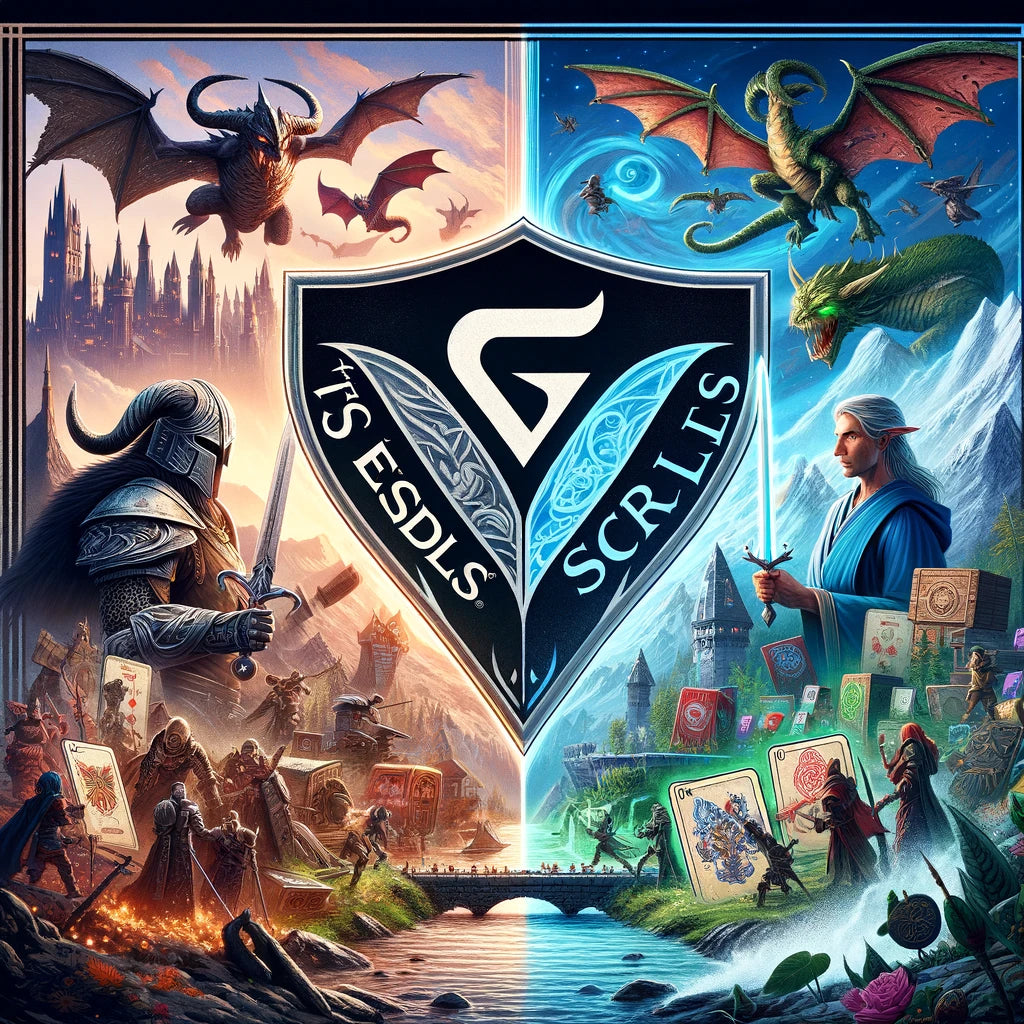Your cart is empty now.

Trademark Disputes in the Gaming Industry: Protecting Your Game's Identity
Trademark Disputes in the Gaming Industry: Protecting Your Game's Identity
The gaming industry, a vibrant and rapidly growing sector, is rife with creativity and innovation. Developers invest significant time, resources, and talent into creating games that capture the imagination of players around the world. As the industry continues to expand, the importance of protecting intellectual property, particularly trademarks, has become increasingly critical. Trademarks play a pivotal role in distinguishing a game's identity and safeguarding it from infringement. This comprehensive examination explores the significance of trademarks in the gaming industry, common types of trademark disputes, strategies for protecting a game's identity, and notable case studies that illustrate the complexities of trademark law in this dynamic field.
The Importance of Trademarks in the Gaming Industry
Defining a Game's Identity
Trademarks are essential for defining and distinguishing a game's identity. They encompass various elements, including the game's name, logo, tagline, and unique visual or auditory elements. These trademarks create a recognizable brand that helps players identify and connect with the game. In a crowded market, a strong trademark can differentiate a game from its competitors and build a loyal player base.
Legal Protection and Exclusivity
Registering trademarks provides legal protection and grants the game developer exclusive rights to use the mark in commerce. This protection prevents others from using identical or confusingly similar marks, which could dilute the brand's distinctiveness and cause market confusion. Trademark registration also provides a legal basis for taking action against infringers, helping to maintain the game's integrity and reputation.
Enhancing Marketability and Value
A well-protected trademark enhances the marketability and overall value of a game. Trademarks can be licensed for merchandise, spin-offs, and other commercial ventures, generating additional revenue streams. Moreover, a strong trademark portfolio can attract investors and partners, contributing to the game's long-term success and sustainability.
Common Types of Trademark Disputes in the Gaming Industry
Similar or Identical Game Titles
One of the most common types of trademark disputes in the gaming industry involves similar or identical game titles. When two games have names that are too similar, it can lead to confusion among players and dilute the distinctiveness of the original game's brand. These disputes often arise when a new game enters the market with a title that closely resembles an existing popular game.
Infringing Logos and Visual Elements
Logos and visual elements are critical components of a game's brand identity. Disputes can occur when a new game uses a logo or visual design that is confusingly similar to that of an existing game. Such infringements can mislead players into believing that the games are related or produced by the same developer, causing brand dilution and potential financial harm.
Misuse of Taglines and Catchphrases
Taglines and catchphrases are often trademarked to protect their unique association with a specific game. Disputes arise when another game uses a similar or identical tagline, leading to confusion and diluting the original game's branding efforts. Protecting these elements is crucial for maintaining a game's unique identity in the market.
Character and Content Imitation
Characters and in-game content, such as names, designs, and distinctive attributes, can also be trademarked. Disputes occur when another game mimics these elements too closely, infringing on the original game's trademarks. These cases are particularly complex, as they involve a detailed analysis of the similarities and potential for market confusion.
Domain Name and Online Presence Conflicts
With the rise of digital distribution and online gaming communities, domain name disputes have become increasingly prevalent. These disputes occur when a third party registers a domain name that includes a trademarked game title or related term. Such actions can divert traffic away from the official game site, causing financial harm and confusing players.
Strategies for Protecting a Game's Identity
Comprehensive Trademark Registration
The first step in protecting a game's identity is to secure comprehensive trademark registration. This involves identifying all potential uses of the game's trademarks and filing for protection in relevant classes of goods and services. For a game, this might include categories such as software, merchandise, entertainment services, and more.
-
Conducting a Trademark Search: Before filing for registration, it is crucial to conduct a thorough trademark search to ensure that the proposed mark is not already in use. This search helps avoid potential conflicts and legal disputes down the line.
-
Filing in Multiple Jurisdictions: Given the global nature of the gaming industry, developers should consider filing for trademark protection in multiple jurisdictions. This strategy ensures that the game's brand is protected internationally and can prevent unauthorized use in key markets.
-
Registering Variations of the Brand: To provide comprehensive protection, it is advisable to register variations of the game's trademarks, including alternate spellings, acronyms, and even common misspellings. This approach helps prevent others from exploiting slight variations of the trademarked name or image.
Monitoring and Enforcement
Once trademarks are registered, continuous monitoring and enforcement are essential to protect the game's identity from unauthorized use.
-
Trademark Watch Services: Utilizing trademark watch services can help detect unauthorized uses of the game's trademarks. These services monitor trademark registries and online marketplaces, alerting the developer to potential infringements.
-
Cease and Desist Letters: When unauthorized use is detected, a cease and desist letter is often the first step in enforcement. This letter notifies the infringer of the trademark rights and demands that they stop the unauthorized use. It can be an effective tool for resolving disputes without resorting to litigation.
-
Litigation: In cases where unauthorized use persists, litigation may be necessary to enforce trademark rights. Legal action can result in court orders to stop the infringement and may include monetary damages for the unauthorized use.
Licensing and Collaboration
Effective licensing and collaboration are crucial for maintaining the integrity and value of a game's brand.
-
Careful Selection of Licensees: When entering into licensing agreements, it is important to carefully select licensees who align with the game's brand values and reputation. This alignment helps ensure that the licensed products or services reflect positively on the game's brand.
-
Quality Control Provisions: Licensing agreements should include strict quality control provisions to maintain the standards associated with the game's brand. These provisions give the game developer the right to review and approve the quality of the licensed products or services.
-
Regular Audits and Compliance Checks: Regular audits and compliance checks are essential to ensure that licensees adhere to the terms of the licensing agreement. These checks help prevent brand dilution and maintain the integrity of the game's brand.
Leveraging Technology for Brand Protection
Advancements in technology offer new tools and strategies for protecting a game's identity.
-
Online Monitoring Tools: Various online tools can help monitor the use of the game's trademarks across the internet, including social media, e-commerce platforms, and other digital channels. These tools can detect unauthorized use and provide valuable data for enforcement actions.
-
Blockchain Technology: Blockchain technology can enhance brand protection by providing a transparent and immutable record of trademark registrations and transactions. This technology can help prevent counterfeiting and verify the authenticity of licensed products.
-
Artificial Intelligence (AI): AI can assist in monitoring and enforcement by analyzing vast amounts of data and identifying potential infringements. AI-powered tools can streamline the detection process and provide actionable insights for brand protection.
Notable Case Studies in Gaming Trademark Disputes
Candy Crush Saga vs. The Banner Saga
One of the most notable trademark disputes in the gaming industry involved King.com, the developer of the popular game "Candy Crush Saga," and Stoic Studio, the developer of "The Banner Saga." In 2014, King.com filed a trademark application for the word "Saga" and subsequently opposed Stoic Studio's use of "The Banner Saga," arguing that the use of "Saga" in the title could cause confusion among players.
The dispute highlighted the challenges of trademarking common words and the potential for overreach in trademark claims. Stoic Studio argued that "The Banner Saga" was not similar to "Candy Crush Saga" and that players were unlikely to be confused. The case was eventually resolved, with both parties continuing to use their respective titles. The dispute underscored the importance of carefully considering the scope of trademark protection and the potential impact on other developers.
PUBG vs. Fortnite
Another high-profile trademark dispute involved PUBG Corporation, the developer of "PlayerUnknown's Battlegrounds" (PUBG), and Epic Games, the developer of "Fortnite." In 2018, PUBG Corporation filed a lawsuit against Epic Games, alleging that Fortnite's battle royale mode infringed on PUBG's trademarks and intellectual property.
The lawsuit centered around the similarities between the two games' gameplay mechanics, visual elements, and overall concept. PUBG Corporation claimed that Fortnite's use of similar elements could cause confusion among players and dilute the distinctiveness of PUBG's brand. The case was eventually settled out of court, with both companies continuing to operate their respective games.
The dispute highlighted the complexities of protecting gameplay mechanics and the challenges of distinguishing between inspiration and infringement. It also emphasized the importance of clear and distinct branding to avoid potential conflicts.
Bethesda vs. Mojang
In 2011, Bethesda Softworks, the developer of the "Elder Scrolls" series, filed a trademark dispute against Mojang, the developer of "Minecraft," over the use of the word "Scrolls" in Mojang's new game title. Bethesda argued that the use of "Scrolls" infringed on its "Elder Scrolls" trademark and could cause confusion among players.
The dispute was notable for its focus on a single word and the potential for brand dilution. Mojang defended its use of "Scrolls," arguing that it was a generic term and did not cause confusion with Bethesda's game series. The case was eventually settled, with Mojang agreeing to rename the game "Scrolls" to "Caller's Bane."
The dispute underscored the importance of considering the potential implications of trademarking common words and the need for clear differentiation in game titles.
Future Trends in Gaming Trademark Protection
The Rise of Indie Developers
The increasing prominence of indie developers in the gaming industry presents new challenges and opportunities for trademark protection. Indie developers often have limited resources for legal protection but still need to safeguard their unique game identities. As the indie gaming scene continues to grow, there will be a greater need for accessible and affordable trademark protection services tailored to small developers.
Evolving Digital Marketplaces
Digital distribution platforms, such as Steam, the Epic Games Store, and mobile app stores, have become crucial for game developers. These platforms present unique trademark challenges, including the risk of counterfeit games and unauthorized use of trademarks. Developers must navigate these digital marketplaces carefully and implement robust trademark protection strategies to safeguard their brands.
Cross-Media Branding
As games increasingly expand into other media, such as movies, TV shows, and merchandise, the scope of trademark protection must also evolve. Cross-media branding requires comprehensive trademark strategies that cover a wide range of goods and services. Developers must consider the potential for brand dilution and ensure consistent and coherent branding across all media platforms.
Enhanced Legal Frameworks
As the gaming industry continues to grow, legal frameworks for trademark protection will likely evolve to address new challenges. This evolution may include more robust protections against unauthorized use, streamlined registration processes, and enhanced enforcement mechanisms. Staying informed about these legal developments will be crucial for effectively protecting game brands.
Essential for brand integrity
In the dynamic and competitive gaming industry, protecting a game's identity through trademarks is essential for maintaining brand integrity, preventing unauthorized use, and ensuring long-term success. Trademarks play a critical role in defining a game's identity, enhancing marketability, and providing legal protection against infringement.
While trademark disputes are common in the gaming industry, developers can implement effective strategies to safeguard their brands. Comprehensive trademark registration, vigilant monitoring and enforcement, careful licensing and collaboration, and leveraging technology for brand protection are key components of a robust trademark strategy.
Notable case studies, such as Candy Crush Saga vs. The Banner Saga, PUBG vs. Fortnite, and Bethesda vs. Mojang, illustrate the complexities of trademark law in the gaming industry and the importance of clear and distinct branding.
As the gaming industry continues to evolve, developers must stay informed about emerging trends and legal developments to effectively protect their game brands. By proactively safeguarding their trademarks, developers can ensure the long-term success and sustainability of their games in an increasingly competitive and dynamic market.



